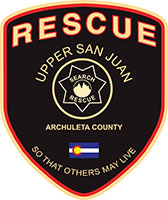MAP COORDINATE SYSTEMS
- jimbodoh
- Nov 2, 2021
- 2 min read
Updated: Jan 5, 2022
There are many Map Coordinate Systems in use, but for SAR you are likely to only encounter two:
Latitude/Longitude in DD.th format
UTM’s
You were probably taught Lat/Long in Grade School. The circumference of our planet is divided into 360 parts, named degrees, each of which are 60 Nautical Miles (a Nautical Mile is 6076′, slightly more than a 5280′ statute mile) in length. Going East to West these divisions are know as degrees of Longitude. Going North to South they are know as degrees of Latitude. Longitude 0° goes through Greenwich England, The equator is Latitude 0° and the (true) North or South pole is Latitude 180°.
Degrees can be further broken down into Minutes (1 Nautical Mile) and Seconds (1/60 of a Nautical Mile). Note that a degree of Longitude is 60 Nautical Miles ONLY at Latitude 0°. As you go north the lines of Longitude converge. At our latitude (37.25°) a degree of latitude is 47.9 nautical miles.
Lat/Long can be written is several formats:
DD.th -> Degrees, followed by decimal fraction of a degree
DD°MM.th -> Degrees, Minutes, followed by decimal fractions of a minute
DD°MM′SS.th -> Degrees, Minutes, Seconds, followed by decimal fractions of a second
Air Assets (i.e. FFL Helicopters) and Alerts from GPS devices like SPOT’s or Garmin Inreach use the DD.th format. Another reason to avoid the other formats is that it’s difficult to enter the ° or ′ characters on a smart phone keyboard.
UTM stands for Universal Transverse Mercator and in that system the surface of our planet is sliced north/south into 60 zones, each 6° of longitude in width, each of which is assigned a number known as a Zone. Each Zone is sliced east/west at 8° of latitude and is assigned a Band which is a letter. There is a pretty extensive explanation of the system here.
Our (approximate) location in the UTM system is 13S N 338123 E 4104123. “13” is the Zone we’re in and “S” is the Band. Fortunately the area we operate in is all within the same 13S Zone/Band which is known as a Grid. The numbers following N and E are meters North and East (i.e. and x and y coordinate) from some location that is south and west of the Grid. The lower left of a grid is not “0,0”. The origin (0,0) of the Grid is intentionally large enough so that it’s not confused with surrounding grids. The last digit (“3” in the coordinates shown above are meters. When communicating UTM Coordinates we often omit the “13S”.
One nice thing about the UTM system is that doing math involving distances between locations is fairly easy. The location 100 meters north of our location is N 338223. If you were told to walk 1 kilometer (i.e. 1,000 meters) east of our location you would proceed east till your GPS indicates E 4105124.
If you’re given a coordinate and it begins with “37.” or “37°” or “-106.”/”-106°”, it’s probably a Lat/Long. If it’s two strings of digits it’s probably a UTM.
Mapping devices (i.e. a GPS) and applications (Avenza, On-X, Gaia) will convert between coordinate systems. Instructions for changing the Coordinate System displayed by Avenza are here.





Comments